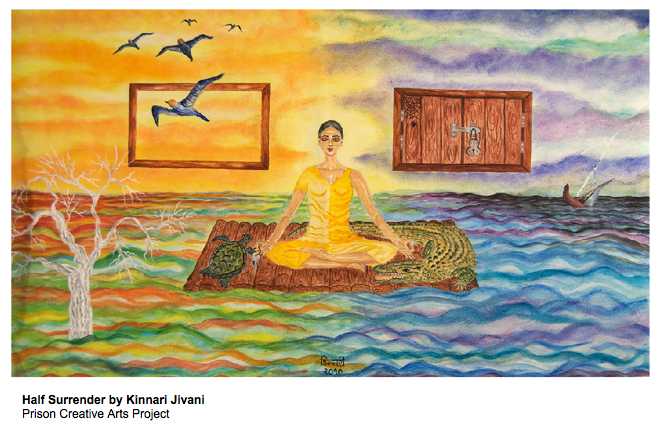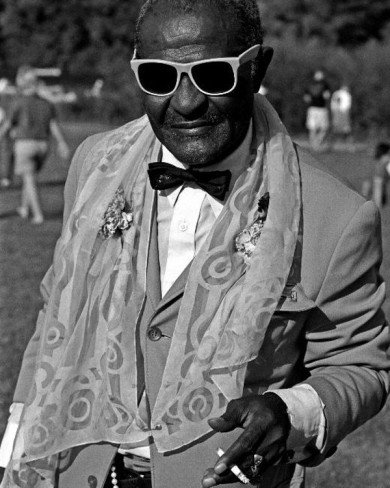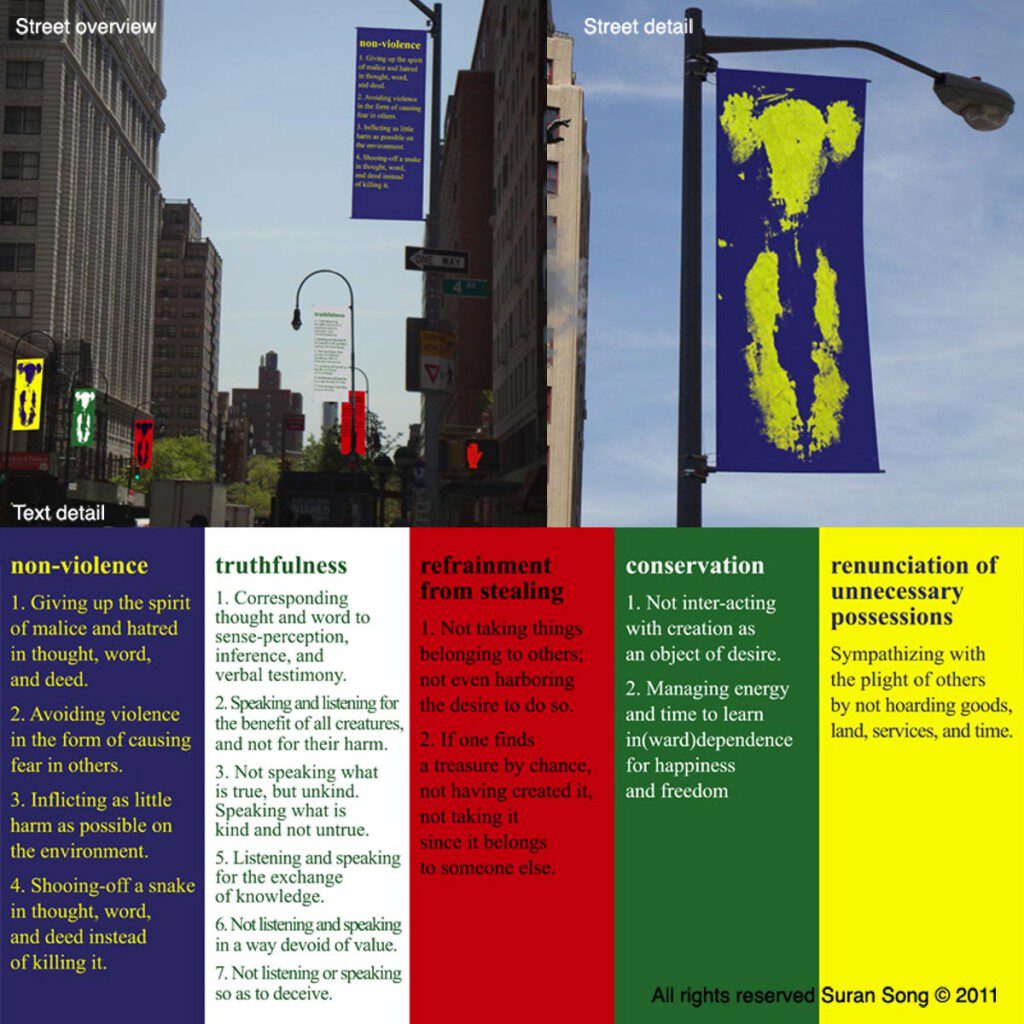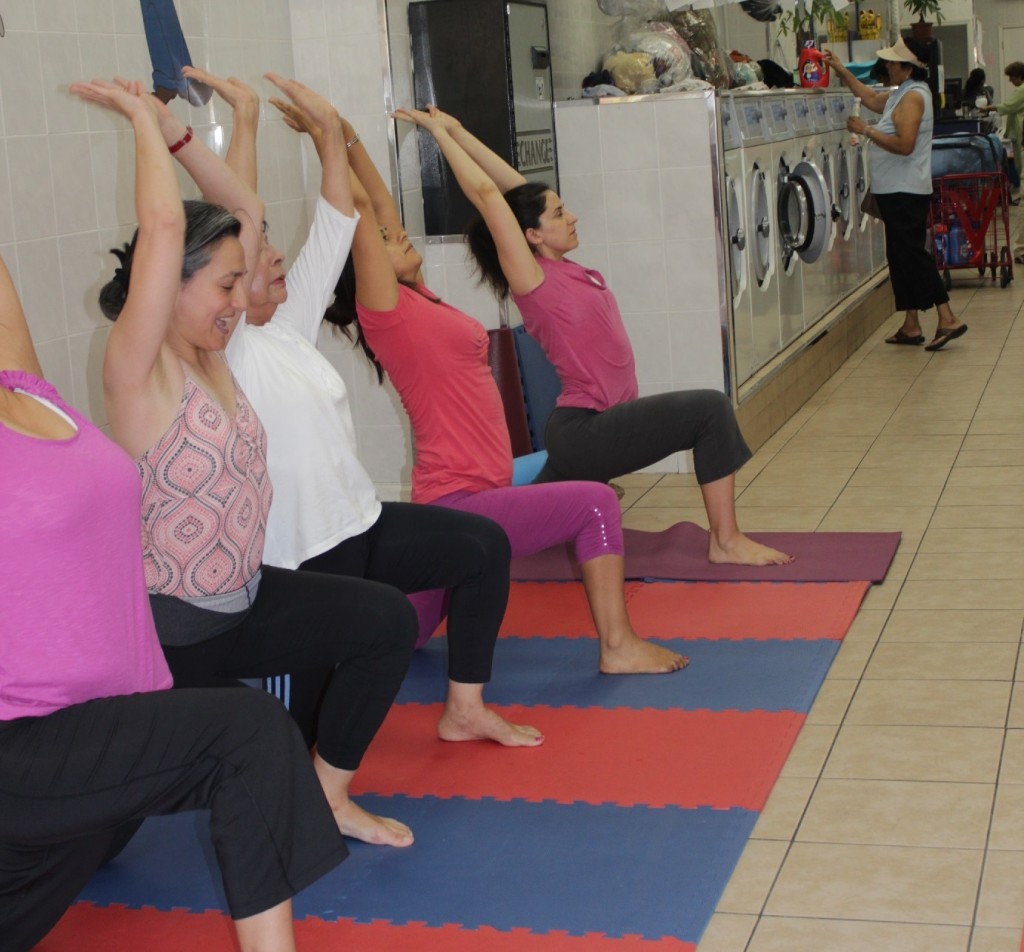Suran Song & Julia Taylor
Leave a CommentEach year, our artist development program, Create Change, supports 15 to 20 artists developing their socially engaged creative practice through our Fellowship, Residency, and Commissions program. In 2012, we began asking our Create Change artists to pair up for Creative Conversations: open-ended creative exchanges to be published on our blog. Read on to meet our Create Change alumni.
Suran: What drew you to The LP Fellowship Program? Also, I’d like to ask you about Ann Arbor and The Residential College at University of Michigan. Did your experience there prompt you in The LP’s direction at all?
Julia: I was drawn to the Laundromat Project for similar reasons as I was drawn to the Residential College (RC) at the University of Michigan. I was looking to be involved in an intimate community of people who were committed to social justice, the arts, and the community. People who were curious and asking questions, challenging assumptions, pushing boundaries with their work and ideas and being. I came to the Residential College wanting to study drama, but what I quickly found was that the arts couldn’t stand alone in a pure way, and I didn’t want to be involved in art for just “arts sake,” as they say.
I got involved in a group called the Prison Creative Arts Project and everything changed for me. I started facilitating theater and creative writing workshops in prisons and youth facilities in Michigan. I was witnessing oppressive systems in a ways I had had the privilege never to see before. Art held a power I had always known for myself, but never had to recognize; art was freedom. Self-expression and community building in spaces that are designed to separate, isolate, and dehumanize was liberating. At 18 I was discovering the power and necessity of artistic practice to help build cultural power, to engage individuals and communities in positive, humanizing struggle. Actually, at that time, I pushed against the identify of “artist” for myself and tried on being a “social scientist” for a while, exploring the social, political, historical systems and situations that were creating and supporting the spaces I would enter. There was no time for being an artist, so I thought.

Suran: I can’t help but think you were feeling the pins and needles of innovating what art can encompass when you say you felt “there was not time for art”. It’s funny the two endeavors were felt as opposed. I recall there was a similar rift between fine art and crafts, between sculpture and ceramics for example — pure concept vs. working function.
Julia: But I didn’t feel whole. …It’s taken me almost a decade, but I’m finding my artist identity again, and being part of The Laundromat Project accelerated that process. Being in a room full of people who say “I’m an artist, this is my artistic practice,” AND “I believe in social justice. I believe that art is an essential part of community building”…. I am reemerging in an artist identity, one that demands social engagement as the power behind the art.
Suran: Clearly, you give a damn! Both your presence and art embody that care. You are excellent at listening and putting on and walking in other people’s shoes.
Julia: Thank you. Questions for you! Feeling like there’s a connection here for us about these paths/journeys in our artistic processes! I’m curious about your punk rock days, your interest in Sanskrit and yoga and how all of it inspires your art making.

Suran: There is a connection in our studio spirit! The zeitgeist of Ann Arbor, MI where I went to high school too is very much about giving a damn, and believing that civic engagement is totally possible for even just one person to undertake. That stubbornness to extend inclusion as a creative act is a great source of energy. In making art that uses yoga as a medium, where yoga means bringing together, I think of Shakey Jake of Ann Arbor who raised his expression of kindness into fine art. He would be out and about town everyday, consistently present, and offer the individual passing by a song or a flower, a drawing or food! He would sit in different areas of town to improvise songs and action art that celebrated whatever nook of weather and circumstance in the moment. He was the first Performance Artist I ever saw. He was sometimes mistaken as a panhandler, homeless person, or busker because he beautifully defied expectation for public exchange. And the punk rock that I grew up with there was such a blessing! Having bands from my high school participate in shows that brought other bands like Minor Threat to a church basement for a local concert planned by local musicians for touring local musicians, listening to each other in songs, and creating a trans-local conversation was early proof of the joy of grass roots. That’s what I love about The LP — it is a place where artists really enjoy thoughtful conversation with their viewers and their peers. The LP is breaking in a tour route of sorts now with laundromats in Philly! It’s the wonderful provision of the experience of “no stage platform”, and it facilitates such rich life.
Julia: I love the idea that the “LP facilitates rich life.” Perhaps it is when we can understand and feel the richness of creativity, free self-expression, and healthy words and actions that we’ll be able to move past bifurcating arts and social justice. It was in a LP session this summer that I expressed the idea that community is the opposite of capitalism. Where do we find our riches?
Suran: In yoga it is found in not harming your body, or other people, or the world. Are you helping yourself and all those around you to be at home? How do you give a damn? Literally, the volume of punk (even through heavy duty earplugs) made my organs jiggle in my rib cage. I was moved through that tremendous sensory input to experience the link of my inner-bodily reactions my perception of sound. And so, the bodily experience always has the mystery of finding yourself at home in your body. Sanskrit chanting also reverberates in your organs!
A favorite Sanskrit Mantra: Lokah Samastha Sukhino Bhavanthu… May all beings everywhere without exception be happy, healthy, and free, and may my thoughts, words, and actions in some way be a contribution.
A favorite Minor Threat song: In My Eyes (click to listen):
You tell me it calms your nerves
You just think it looks cool
You tell me that nothing matters
You’re just f*****g scared
You tell me that I make no difference
At least I’m f****’ trying
What the f*** have you done?
It doesn’t look that way to me, in my eyes.
In Sanskrit, Minor Threat is talking about Brahmacharya Dristhi. Brahmacharya means conservation: energy management by not gazing upon nature as an object of desire; using energy to find in(ward)dependent happiness. So, not objectifying nature, or yourself is the path to richness. Dristhi in yoga, is how you place the gaze in the poses and breath with soft mouth and eye muscles. “It doesn’t look that way to me…in my eyes,” the lyrics challenge conventional sight –are you gazing without malice, without seeing lack in yourself and others?

Julia: How do we create, embody, live, and express wholeness? Yeah…”how do you give a damn?” One of the things I loved so much about your project with yoga arts in the laundromat were the regulars who showed up, and about how you then opened your home so that more people could show up more often. And how you show up! That’s what I’ve always felt to be essential in working inside any kind of system (prison, education, etc) – that so much of our work is showing up, being present with people. That’s part of the base of our community work.

Suran: Thank you. Clearing out home to make space for neighbors and yoga arts was a giant growth step in receiving joy, in being brave that wouldn’t have happened without The LP Residency. Svaha and svadeshi! Svaha is throwing your ego into the sun to burn up, and svadeshi is throwing yourself into your own neighborhood’s sun, that energy of independence through local production. What you say about capitalism and community is also how we hold our gaze in the world, which is the domain of visual art. Community at root is not about accumulation and power. That is only aggregation. Jain farmers for instance do not uproot the whole veggie. They look very slowly and carefully to split the root in order to leave the life force intact in home ground. Food, work, labor (any energy/matter) is not an object to tear-out from its source as quickly as possible for itemization and market consumption because it is part of ourselves, nature. Community is about how we show-up in the world to treat ourselves and others to make richness and non-violence the landscape. That’s what is so strengthening about The LP. In my residency at the neighborhood laundromat, where I offered yoga classes, yoga based-printmaking, and the yoga principles on the flags, this point of being really became clear. Creativity, well being — these joys belong to all everywhere, not just in compartmentalized spa gallery settings. Seeing someone as a consumer is an objectification. Community is a loving spirit that makes evident in art and heart practice the difference between respect and objectification. Knowing that difference, practicing that difference is public art, like Shakey Jake. Alas, that is why I sense our Gonzo-Hyper-Invisible-Hand-Global-Capitalism from Ayn Rand and Milton Friedman comes from the most cruel poverty which can occur in material affluence too, that unfortunate circumstance where abuse is mistaken as love.